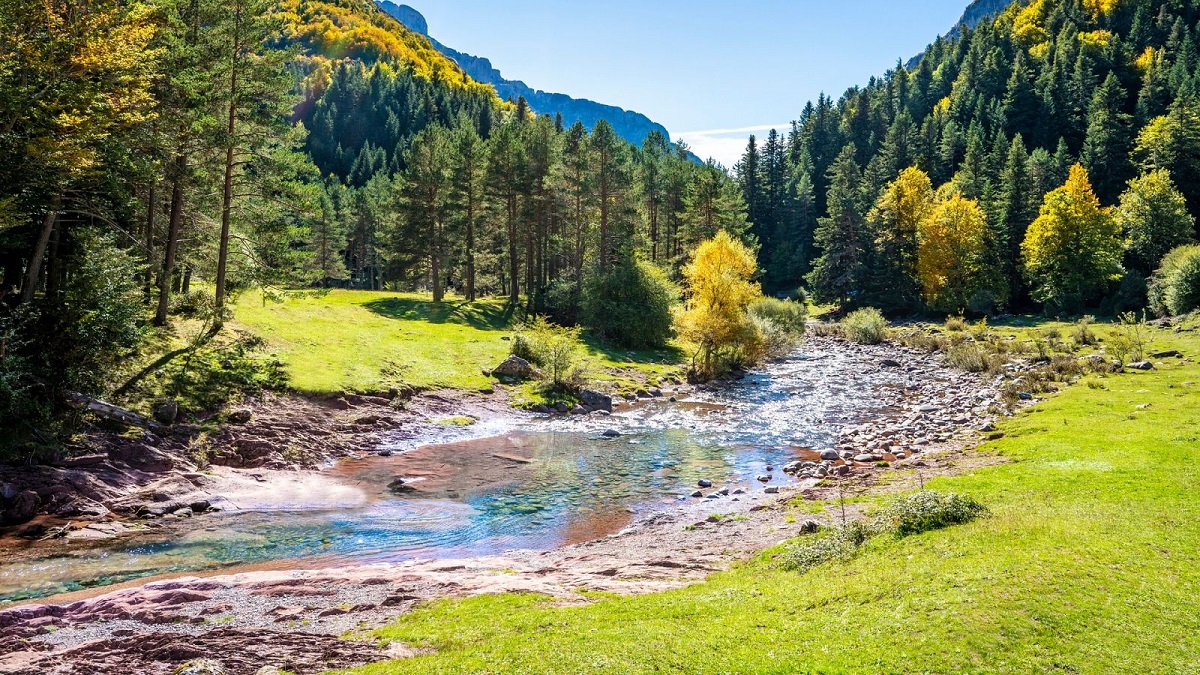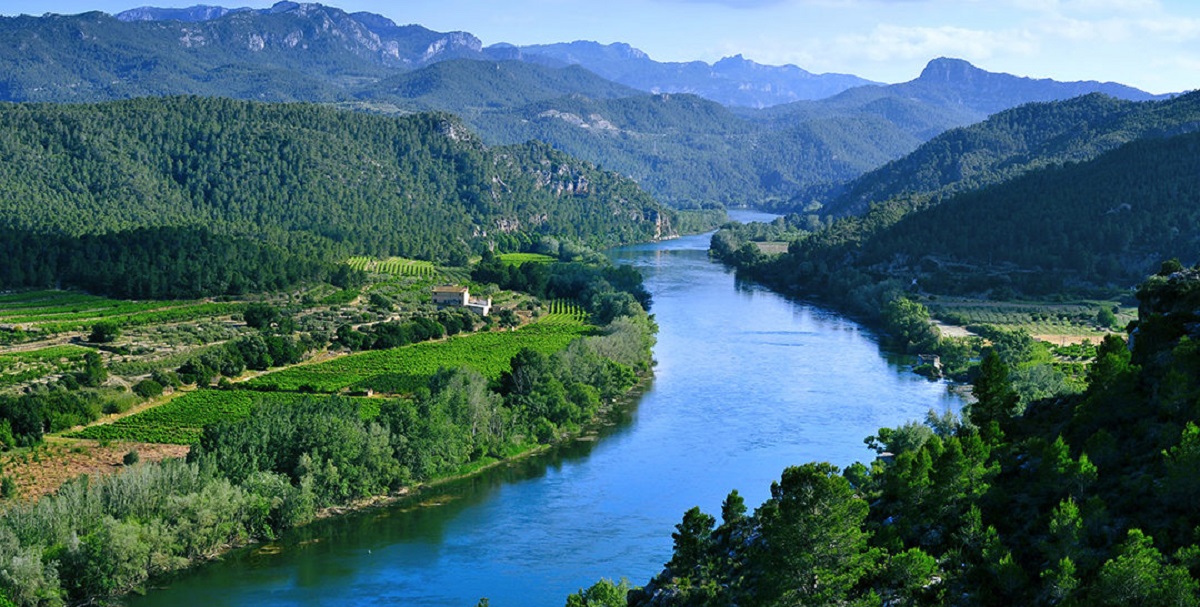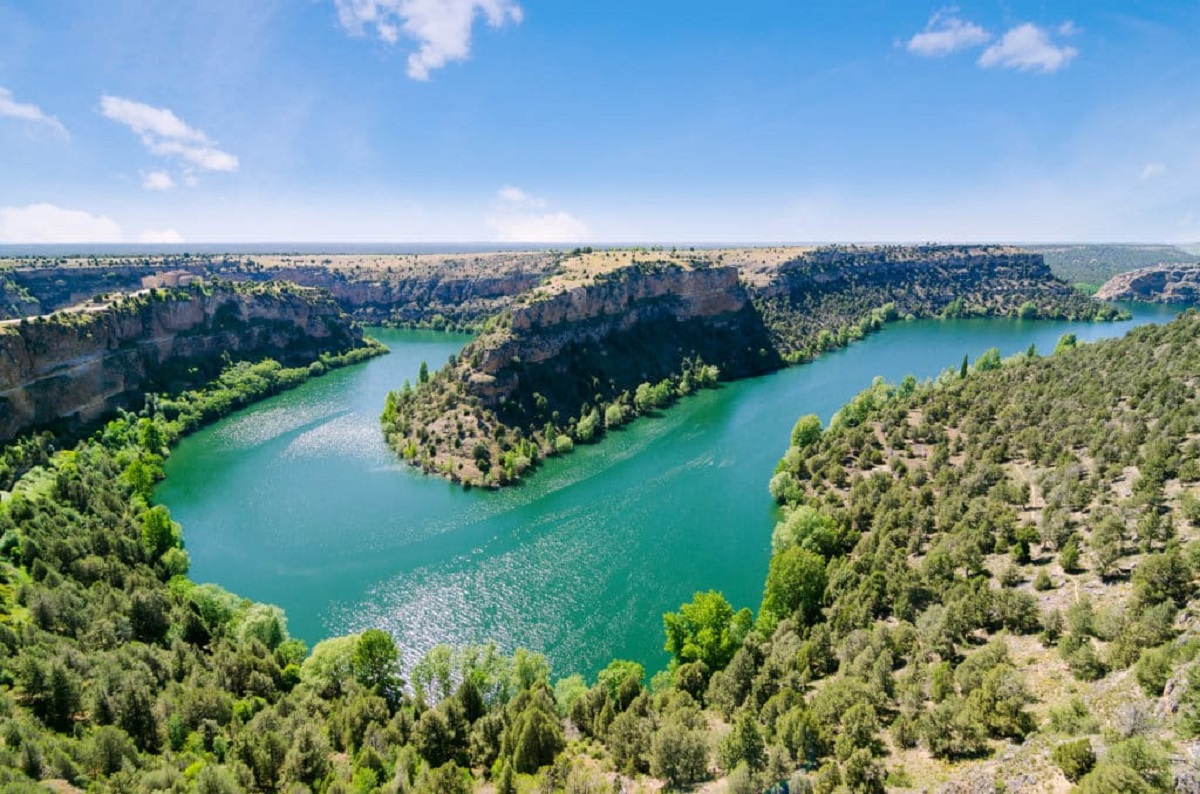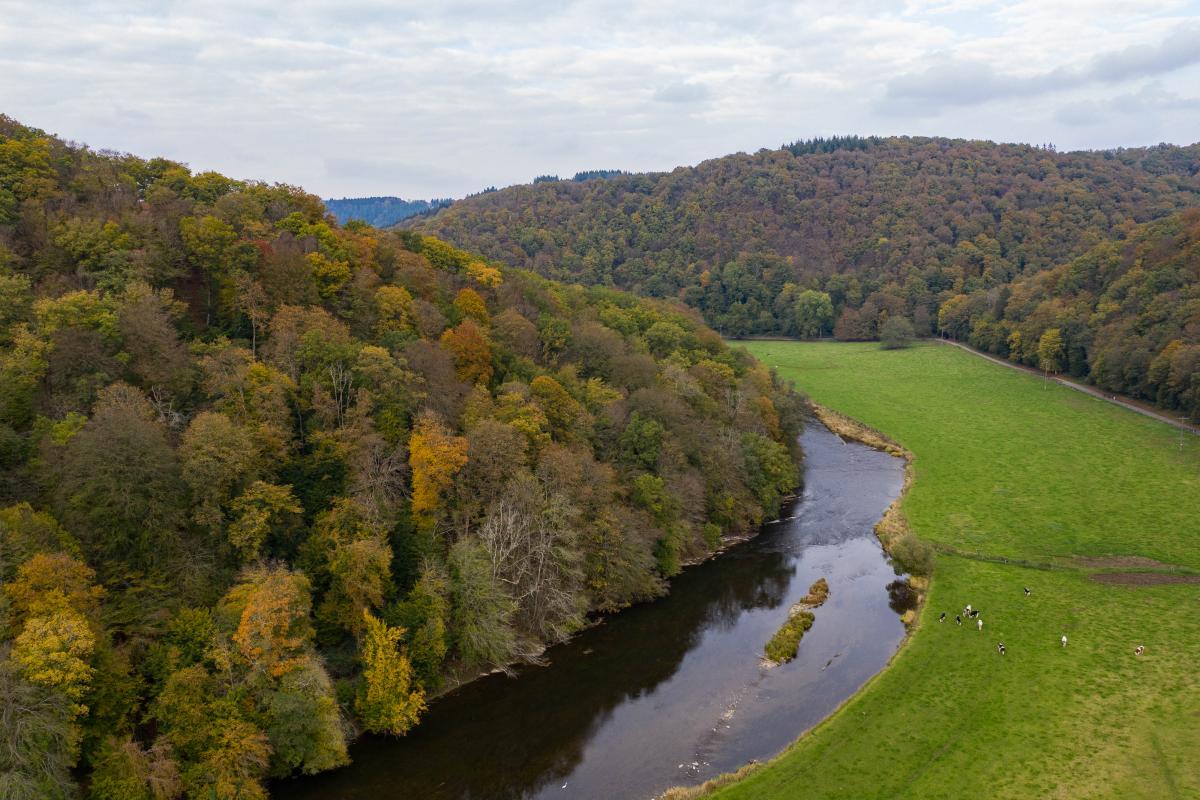
In Spain there are a total of eight main rivers. The hydrography of Spain is characterized by its abundance and complexity. In addition to the main rivers that flow directly into the sea, there are also numerous tributaries that merge with other rivers. Hydrographic basins cover the territories through which the main rivers and their tributaries pass. Furthermore, hydrographic slopes consist of interconnected terrain that ultimately flows into the sea itself.
In this article we are going to tell you the best facts and curiosities about the rivers of Spain.
Main rivers

My no
Originating in the Sierra de Meira, in Fuente Miña, Galicia, this river runs a distance of 310 km and covers a vast basin of 12.486 km². Its final destination is the Atlantic Ocean.
The Sil River is the main tributary, accompanied by important tributaries such as the Neira, the Barbantiño and the Búbal.
Duero
This river, which extends through the northwest of the Iberian Peninsula, is of great importance. Its length covers an impressive 897 kilometers, of which 572 run through Spanish territory. It should be noted that it has the largest flow of water in the entire peninsula, only surpassed by the Ebro River in Spain. Its vast extension covers a staggering 98.073 km², of which 78.859 km² are within Spanish borders and 19.214 km² within Portuguese territory. Within the Spanish part, it passes through several autonomous communities, including Castilla y León, Galicia, Cantabria, La Rioja, Castilla-La Mancha, Extremadura and Madrid.
Originating in the Picos de Urbión in Soria, Castilla y León, the Duero River makes its way towards the Atlantic Ocean. Throughout its journey it receives contributions from important tributaries such as the Pisuerga, the Esla River, the Eresma, the Adaja River and the Tormes River.
The Tagus River

The Tagus, the longest river in Spain, spans an impressive 80.600 km². This extensive territory is divided between Spanish and Portuguese lands, with 69,2% (55.750 km²) within Spain and the remaining 30,8% (24.850 km²) located in Portugal. In terms of river basins on the Iberian Peninsula, the Tagus occupies third place in importance. Not only that, It also holds the title of being the longest river in the entire peninsula. As it passes through the picturesque landscapes of Aragon, Castilla-La Mancha, Madrid and Extremadura, the Tagus touches the lives of residents of four different autonomous communities.
Originating in the Sierra de Albarracín in Aragón, the Tagus flows until it empties into the Atlantic Ocean. Throughout its journey it receives contributions from important tributaries such as the Jarama river, the Alberche, the Tiétar river, the Alagón river, the Almonte and the Salor river.
Throughout history, the Tagus River has had great importance as it served as a dividing line between Christian and Muslim territories, giving rise to the construction of formidable fortresses along its route.
ebro
With an average flow of 600 m3/s, the largest river in Spain and the second largest in the Iberian Peninsula leaves its mark. It proudly holds the title of second longest river, only behind the Tagus. Its entirety is limited to the borders of Spain, where it proudly claims first place among rivers that originate and flow clearly within the country, with impressive length and abundant flow.
With a length of 930 km, the river in question has the largest hydrographic basin in Spain, with an impressive area of 86.100 km². As it passes through the country, the Ebro elegantly passes through seven autonomous communities: Cantabria, Castilla y León, La Rioja, the Basque Country, Navarra, Aragon and Catalonia.
The Ebro River, which crosses several regions, receives contributions from several important tributaries, including the Nelas River, Bayas, the Zadorra River, the Aragón, the Izarrilla River, the Najerilla, the Gallego, the Guadalupe, the Segre, the Cinca and the Jalón. As it meanders, the Ebro River crosses the prominent city of Zaragoza, which has served as a navigable waterway since ancient Roman times.
Guadiana
The Guadiana River, that crosses the regions of Andalusia, Extremadura and Castilla-La Mancha, It stretches for an impressive 744 km, making it the fourth longest river on the Iberian Peninsula. With an average flow of 78,8 m³/s, it is also the fourth largest river in the region. Its basin covers a vast area of 67.733 km².
Born in the Lagunas de Ruidera, in Castilla La Mancha, this river gracefully makes its way towards the Atlantic Ocean, marking both its origin and its destination.
Guadalquivir
Emerging from the majestic Cazorla mountain range in the charming region of Andalusia, this river proudly claims its position as the fifth longest in all of Spain. Its name, derived from the Arabic language, It is aptly translated as “Big River,” a fitting testament to its greatness.
River traffic in Spain is exclusive to this specific river. If in ancient times it extended to Córdoba, today it is only navigable to Seville. This river eventually empties into the Atlantic Ocean. Notable tributaries include the Guadalimar River, the Guadiato, the Guadiana Menor River and the Genil River.
Jucar
With a total length of 497,5 km, this river crosses the regions of Castilla-La Mancha and Valencia, and stands out as one of the Spanish rivers that finally flows into the Mediterranean Sea.
Segura
Crossing the regions of Andalusia, Castilla-La Mancha, Murcia and the Valencian Community, the Segura River undertakes a journey of 325 kilometers, covering a hydrographic basin of 18.870 km². Originally from Andalusia, this river eventually reaches the Mediterranean Sea.
Curiosities of the rivers of Spain

Located in Salamanca, the Almendra Dam has a staggering height of 202 meters, making it the largest dam in Spain. This colossal structure is built on the Tormes River, considered one of the emblematic rivers of Spain. Interestingly, the Iberian Peninsula derives its name from the ancient Roman term for the Ebro River: the Iber River.
The name La Rioja derives from the Oja River, while Aragón takes its name from the Aragón River. Extremadura, on the other hand, means "the end of the Duero." The rivers Guadalhorce, Guadiana, Guadarrama and Guadalquivir all have a common prefix, 'Guad', which comes from the Arabic language and means river.
Originally from the Ruidera Lagoons, the Guadiana River suffers a peculiar occurrence: it disappears shortly after its source to reappear 15 kilometers downstream. This intriguing phenomenon can be attributed to the leakage and intense evaporation taking place in the surrounding region.
The Tinto River owes its name to its distinctive reddish hue, a result of its acidic and inhospitable conditions that resemble the environment of Mars.
In Spain there is a unique summit known as Pico Tres Mares, from where rivers originate that eventually flow into the three seas that surround the Iberian Peninsula: the Cantabrian, the Mediterranean and the Atlantic. The Ebro, listed as the longest river in Spain and the second in the Iberian Peninsula, also holds the distinction of being the second longest river that flows into the Mediterranean, only surpassed by the Nile.
From its origin in Cantabria, the route crosses seven autonomous communities, including Castilla y León, La Rioja, the Basque Country, Navarra, Aragon and Catalonia.
I hope that with this information you can learn more about the rivers of Spain and their curiosities.